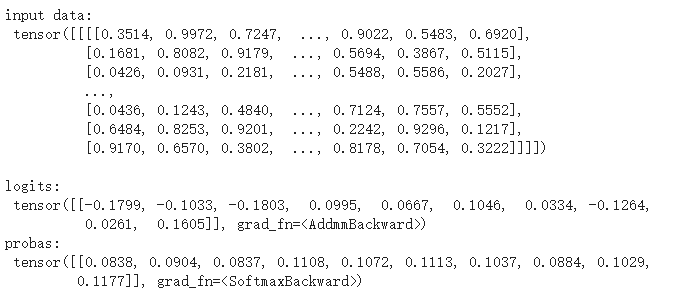前言
Lenet 是一系列网络的合称,包括 Lenet1 - Lenet5,由 Yann LeCun 等人在1990 年《Handwritten Digit Recognition with a Back-Propagation Network》中提出,是卷积神经网络的 HelloWorld。
Lenet5
Lenet 的最终版本是 Lenet5,是一个 7 层的神经网络,包含3个卷积层,2个池化层,1个全连接层。其中所有卷积层的所有卷积核都为5x5,步长 strid=1,池化方法都为全局pooling,激活函数为 Sigmoid,网络结构如下:

代码复现
Lenet 网络的参数量,以及每层的输出特征图大小如下:
- 卷积的卷积核都为 5×5 步长 stride=1
- 输入是 32×32
- -> 6@28*28(卷积C1) 参数:5×5×6+6 =156
- -> 6@14*14(池化S2) 参数:偏移量参数 2×6
- -> 16@10*10(卷积C3) 参数:5×5×6×16+16 = 2416 # 这里与原始的 LeNet 网络有区别
- -> 16@5*5(池化S4) 参数:偏移量参数 2×16
- -> 120@1*1(卷积C5)当然,这里也可以认为是全连接层(因为上一层得到的特征图是5x5,卷积核也为5x5) 参数:5×5×16×120+120 = 48120
- -> 84(全连接F6) 这个 84 的选取有个背景:与 ASCII 码表示的 7×12 的位图大小相等 参数:120×84
- -> 10(输出类别数) 参数:84×10
下面我们用 Pytorh 框架实现一些 Lenet5,实际代码会与上面的说明有些差别,并模拟一个输入进行测试。
import torchimport torch.nn as nnimport torch.nn.functional as Fclass LeNet5(nn.Module):def __init__(self, num_classes, grayscale=False):"""num_classes: 分类的数量grayscale:是否为灰度图"""super(LeNet5, self).__init__()self.grayscale = grayscaleself.num_classes = num_classesif self.grayscale: # 可以适用单通道和三通道的图像in_channels = 1else:in_channels = 3# 卷积神经网络self.features = nn.Sequential(nn.Conv2d(in_channels, 6, kernel_size=5),nn.MaxPool2d(kernel_size=2),nn.Conv2d(6, 16, kernel_size=5),nn.MaxPool2d(kernel_size=2) # 原始的模型使用的是 平均池化)# 分类器self.classifier = nn.Sequential(nn.Linear(16*5*5, 120), # 这里把第三个卷积当作是全连接层了nn.Linear(120, 84),nn.Linear(84, num_classes))def forward(self, x):x = self.features(x) # 输出 16*5*5 特征图x = torch.flatten(x, 1) # 展平 (1, 16*5*5)logits = self.classifier(x) # 输出 10probas = F.softmax(logits, dim=1)return logits, probasnum_classes = 10 # 分类数目grayscale = True # 是否为灰度图data = torch.rand((1, 1, 32, 32))print("input data:\n", data, "\n")model = LeNet5(num_classes, grayscale)logits, probas = model(data)print("logits:\n",logits)print("probas:\n",probas)
最后模拟了一个输入,输出一个分类器运算后的结果和 10 个 softmax 概率值


